Swords Wizardry Continual Light Text File
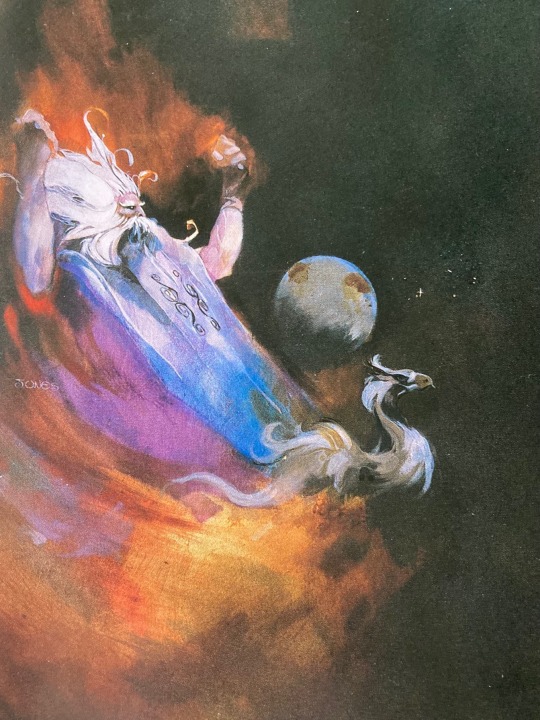
Jeffrey Catherine Jones' 1968 cover to Swords Against Wizardry, by Fritz Leiber
881 notes · View notes
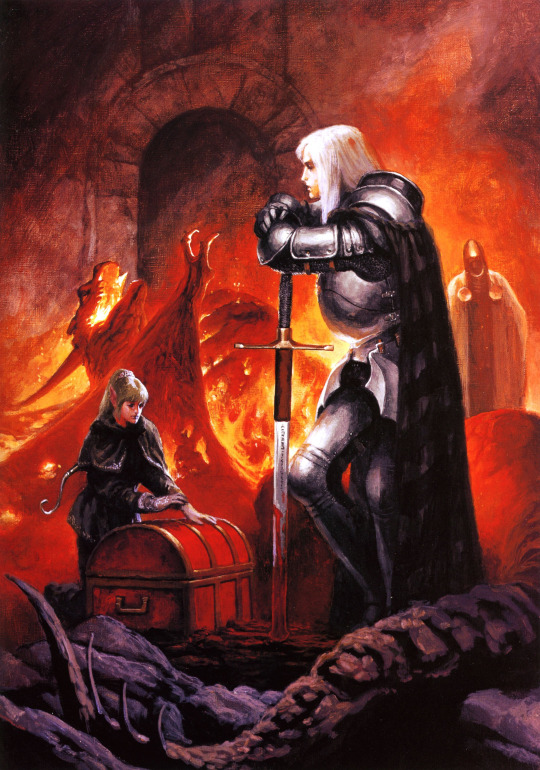
Wizardry, Jun Suemi (1981)
19 notes · View notes

Jeffrey Catherine Jones, cover illustration for Swords against Wizardry, by Fritz Leiber (Ace Books, July 1968).
__________________________________________________ Our shop: https://bookshop.org/shop/manyworldspress
67 notes · View notes
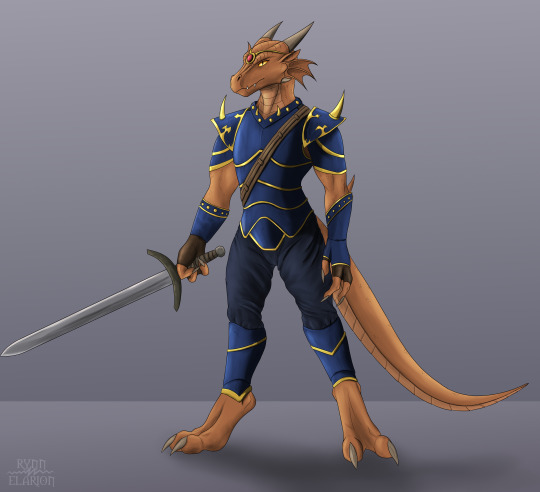
Dracons are playable species from very old Wizardry games series. Their origins explained simple. They are result of... close relations between dragons and humans. They naturally big strength and agility and have ability to breath acid on their enemies. I would like this species to be remembered, because there are not much artwork with them in the internet. I am going to draw more of them in future. There are alredy several sketches.
2 notes · View notes
Grue

Image © Frog God Games
["It is very dark. You are likely to be eaten by a grue." The grues were one of the first memorable monsters in video gaming, from the Zork franchise, so it's no wonder that the retro-minded Frog God Games made sure to have a grue in Monstrosities. There are two, actually, both similar in their giant teeth and fondness for darkness. I like this sluggy one better than the other, which is just floating fangs. Neither is terrible game accurate: in later installments of Zork, grues are said to have fur, claws, and fish-like heads. I gave my version some earth and stone abilities, in reference to the elemental grues of D&D.]
Grue CR 12 CE Aberration This creature looks like a fat leathery slug, its body mottled and multicolored. Its head is dominated by a huge fanged maw, and beady, disturbingly human, eyes glare out over it.
Creatures of darkness and earth, grues lurk in the deepest, darkest caverns. They despise light, and are rarely if ever found on the surface. Their skin gives them a snake-like appearance from the outside, but they have no bones or even distinct organs, just a viscous, acidic gel comprising their form. Their most solid structures are their teeth, and they can squeeze through seemingly impossible gaps.
A grue uses its mastery over stone to sculpt its lair into a maze of twisty little passages, all alike. It stalks prey through these tunnels, waiting for their light sources to need refreshing in order to strike. Magical lights are quashed with a dust of twilight spell. The grue's tactics are simple once combat is joined: eat as many foes as possible. If creatures have access to light based spells or weapons that can get through the grue's defenses, they retreat, sealing off pursuit with a wall of stone or slipping through a tiny crevice in order to make their escape.
Grue CR 12 XP 19,200 CE Large aberration (earth) Init +5; Senses darkvision 120 ft., Perception +17, see in darkness, tremorsense 30 ft. Defense AC 26, touch 10, flat-footed 25 (-1 size, +1 Dex, +16 natural) hp 172 (15d8+105) Fort +12, Ref +6, Will +11 DR 10/adamantine and slashing; Resist acid 10, electricity 10, sonic 10 Defensive Abilities amorphous; Weakness vulnerable to light Offense Speed 20 ft. Melee bite +19 (2d8+13/19-20 plus grab) Space 10 ft.; Reach 5 ft. Special Attacks swallow whole (AC 18, 17 hp, 2d6+13 bludgeoning and 2d6 acid) Spell-like Abilities CL 12th, concentration +15 3/day—quickened dust of twilight (DC 15), stone shape 1/day—deeper darkness, passwall, wall of stone Statistics Str 29, Dex 12, Con 24, Int 11, Wis 15, Cha 16 Base Atk +11; CMB +21 (+25 grapple); CMD 32 (36 vs. bull rush on earthen surfaces, cannot be tripped) Feats Cleave, Improved Critical (bite), Improved Initiative, Improved Vital Strike, Power Attack, Quicken SLA (dust of twilight), Skill Focus (stealth), Vital Strike Skills Climb +24, Knowledge (dungeoneering) +15, Perception +17, Stealth +20, Swim +24; Racial Modifiers +8 Stealth Languages Aklo, Terran SQ compression, rooted movement Ecology Environment underground Organization solitary or pod (2-5) Treasure standard Special Abilities Rooted Movement (Su) A grue fuses slightly with earth or stone surfaces as it moves along them. It ignores difficult terrain caused by mundane rocks, mud or earth, and gains a +4 competence bonus on its CMD against any forced movement while on a earthen or stone surface. It also can make Climb checks to move at its full speed along earth or stone surfaces. Vulnerable to Light (Ex) A grue is sickened in bright light. This is increased to nauseated in full sunlight (not just a daylight spell).
144 notes · View notes
Sand and sorcery
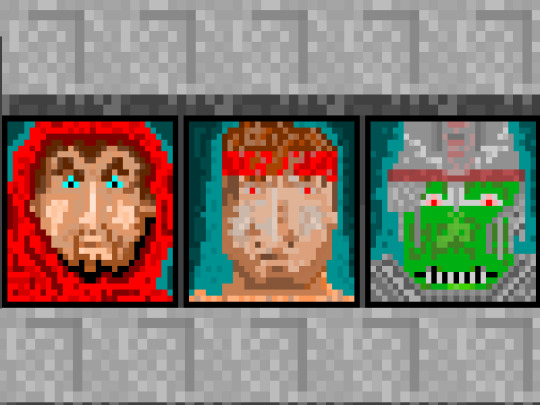
Pixel art for today is magical. Based on Might And magic 3 Isles of Terra. This is such a role playing videogame for system MS DOS. I have never played in third part by myself, but I have seen screenshots and watched how another plays in YouTube.
I am a big fan of Might And Magic 6-8. But let's return to here. It is a magical day today. So I have touched with Might and Magic. In version of part three. I have successfully draw characters in such style. So let's say they are like clones. But I made them my way. And this means – about a step to draw something else from this magical videogame. This title has a very interesting with fantasy world. And next step – to make something simple in code by myself with such style. But program code – it is another tale.
Meet these ones. You party members. Mage in red hood, warrior barbarian, and your best friend – green orc! Together you will travel by magic lands. Conquer dragons, chase kings and necromancers. Raid tombs of ancients, which are guarded hard by magic jeans. Explore networks of dungeons. Dungeons – is a main thing.
Orc likes dungeons, he told me this! He thinks that rats from dungeons are real delicious. And barbarian is in search for mystery sword of kings, using this sword he will conquer his own kingdom. He does not know how certain it looks. Most clever here – is mage. He is searching for any strong spells, most likely, that nobody has them. He is going into the power with them.
So orc is already loudly speaks to you – Lets go to the dungeon! I can share with you some catched rats! At the evening we will eat them with delicious at the fire!
If you are decline he will be upset.
Barbarain speaks to you – Maybe in this lands this mystery sword is existed. Sword of kings. I have never seen it. But in my homelands there are legends about this sword. With this sword I become invincible. I am sure that there are many adventures ahead! We need to check every ruins and dungeon, every that we can find!
Barbarian is very curious. And he is already shakes you with all his strength. Decline – it can be dangerous.
Mage speaks – Well, searcher for adventures. I am just a traveler, just like you are. I have certain aim. But I never tell you about this. You will be enough to know – that we have the same roads, where ever you go. I am going to find most powerful spells, as powerful as possible. I will be a legend.
And so they go for adventure!
6 notes · View notes
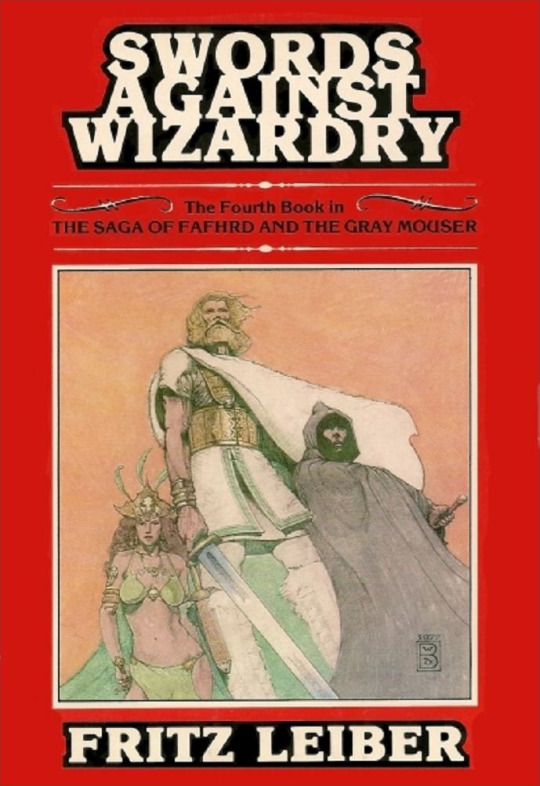
Getting back in the habit of carrying around a paperback wherever I go, like back in my middle school to early college years.
Current book is 'Swords Against Wizardry'. I'm mainly letting fate choose what I read next via thrifting. And afterwards sometimes dropping them off at one of those "Take a Book, Share a Book" Little Free Library nooks nearby one of the local schools.
2 notes · View notes
scientist guy: so you can do magic? show me
Silas: sure! um, ok, hm *casts eldritch blast, and destroys the guy's roof*
scientist guy:
Silas: oh, shit,, my bad, i don't know what that was. i've been trying to become a wizard, but my spells seem to keep going awry, i'm sorry, i really didn't mean to destroy your property..
scientist guy:
Silas: but.. i mean, that was magic.. oh i've been learning from this book i got at the magic school. it's very fascinating, lots to learn - do you want to read it?
scientist guy: .... no thank you... i'm quite fine...
3 notes · View notes
Rancid Canyons of the Floating Death Sheep NOW LIVE on Kickstarter!!!
Rancid Canyons of the Floating Death Sheep NOW LIVE on Kickstarter!!!

View On WordPress
2 notes · View notes

Mythmere Games Swords & Wizardry Character Sheet.
https://www.mythmeregames.com/products/swords-wizardry-character-sheets
2 notes · View notes
Two Unboxings
I recently recieved two boxed game sets; A24's The Green Knight Roleplaying Game, and a recently crowdfunded translation of Swords & Wizardry in Hebrew. The Green Knight RPG The Green Knight, A24's retelling of the Gawain story, is a gorgeous movie with a super saturated palette, a terrific soundtrack, and a great bit of Owls Creek Bridgery. I enjoyed the film tremendously, and for that reason…

View On WordPress
2 notes · View notes

Maxim Bazhenov • "Genrich, the Wing of Death"
Instagram @bazhenovmaxie
artstation facebook instagram
21 notes · View notes
DRPGs: function over form
I have an odd affection for DRPGs, or "Dungeon-crawling Role-Playing Games," which are sometimes referred to as "Wizardly clones" in the same way that early FPS games were called "Doom Clones."
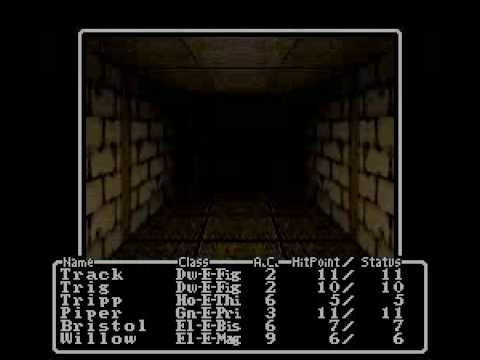
Legend of Grimrock is an indie game that I've found is closest to actually emulating the feel of the original Wizardry games from an aesthetic perspective while updating them for modern graphics; most of the examples from recent history are Japanese and feature anime-style character designs, with Etrian Odyssey being perhaps the best-known (and best-selling).
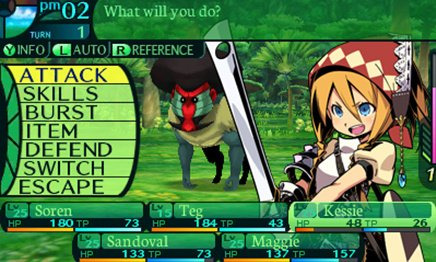
I describe my affection for DRPGs as "odd," because few other games have the ability to thoroughly captivate me for the time I'm playing, only for me to completely forget everything about them when I'm done playing them.
For example, I recently noticed that Demon Gaze 2 was on sale for 75% off in the Playstation store. I'm keen to try it out, since I enjoyed the first Demon Gaze game so much that I took the time to 100% (I earned the "platinum trophy" so that anyone on my Playstation Network friends list can see the evidence of my achievement). This is a task that reportedly takes around 50 hours. I say "reportedly" because it's based on other people's reports of how long it took for them to "platinum" the game; I can't really recall from memory how much time I spent playing that game, or really anything else about it for that matter.
I cannot express how weird it is for me to not have a memory of have any specific memories of playing a video game, especially one that I spent that amount of time playing. I can still vividly remember a specific game of Dota 2 that I played over half a decade ago. I could talk for paragraphs about an indie puzzle game that I played for 2 hours in 2012. You could ask me to talk about any of the N64 games I played as a middle schooler and I could probably recall many specific memories from the time I spent with those games.
And yet, when it comes to Demon Gaze, I remember nothing. Not the characters, not the plot, not any of the specific milieus or setpieces. And, truthfully, it's probably because caring about any of these things is never really something that the game asked of me in the first place. I earnestly tried to remember anything I could about Demon Gaze, and here is a full, comprehensive list of what I came up with:
There's an NPC whose character trait is that she's always sleepy. I think she lived in the basement of...something. I think your "home base" was an inn, and she lived in the inn's basement, and you would sometimes have to talk to her to do certain things or something.
One of the levels had plants and was mostly green. Maybe multiple levels, actually. I want to assume this meant there was a hedge maze, but I'm not actually remembering a hedge maze; I'm just assuming that a dungeon-crawling game plus a green area must mean there was a hedge maze.
One of the levels involved climbing a tall tower, or maybe descending into a deep pit. There was definitely verticality involved, and the map was cylindrical.
I think the main character used swords. But maybe they didn't. I'm pretty sure that you could dual-wield at a certain point in the game. (I think part of what made the main character so strong was the fact that they could equip an artifact that let them dual-wield?)
That is truthfully and honestly the full extent of what I remembered about the game before I started writing this post and digging up screenshots which reminded me of the main character's heterochromia. When grabbing screenshots for this post, I found one that showed a character's class as being "Paladin," and my reaction was not, "Oh yeah, Paladin was totally a character class in this game," but "Oh yeah, Paladin totally sounds like a character class that could plausibly be in this game."
Normally, I'd have memories of specific boss battles, or setpieces, or characters, or story moments. But in place of those, I have memories of looking at Google Sheets that people had made to list all of the items that dropped from certain areas, and ranked them to let you know which items were the best. I could more vividly tell you the decor of the room I was in when I unlocked the platinum trophy than the final boss I beat (or item I obtained) to unlock it. (Being a game for a portable system like the Vita, I actually have memories of many locations and "setpieces" associated with that game; just not locations in the game.)
DRPGs are, maybe more than any genre, a game that is experienced through a layer of abstraction, and I think this is best illustrated by the Etrian Odyssey, which lives in the DS family of systems, which are notable for having two screens (as is suggested by the name "Dual Screen"). Here's a screenshot that shows what the game displays on both screens when you're dungeon crawling:
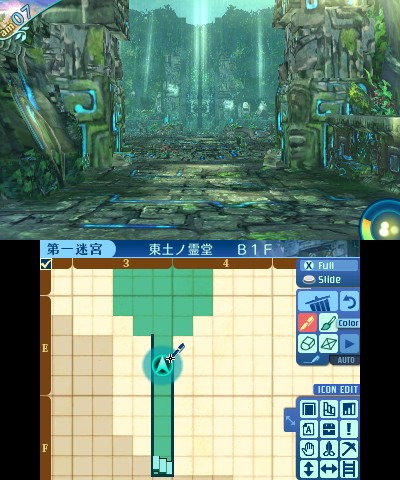
On the top screen, you see the environment you're exploring in all its 3D-rendered detail. On the bottom screen, you have a map of the area you're navigating, with the arrow in the middle indicating your current position and orientation. And for the vast, vast majority of dungeon crawling, my attention is focused solely on the bottom screen.
This is, I gather, how most people play DRPGs. Etrian Odyssey puts even more of the focus on the bottom screen by forcing you to draw the map as you walk (hence the bevy of icons and paintbrushes it offers you when filling in the grid). If you try to play by looking at the environment, you'll quickly realize how much of the area is just copy-pasted assets that are difficult to navigate by. The map isn't just a "guide;" the game feels less like a first-person dungeon crawler and more like game with a top-down POV where your avatar is represented by that arrow on the map. If you watch gameplay videos and only pay attention to the top screen, you'll be blown away by how fast it seems like people are moving, but it makes a lot more sense when you realize that people are only paying attention to the map: people will see, "okay, I want to walk north 5 tiles, turn 90 degrees left, then walk west 2 tiles," and then just input that series of actions faster than the walking animation can actually play out on screen.
I'm half convinced that the reason Etrian Odyssey took off more than any other DRPG is that, due to being on the DS, it has an entire screen dedicated to the map, whereas in a game like Demon Gaze, your screen is mostly taken up with what amounts to decorative filler while the part of your brain that's focused on gameplay has to focus on a mini-map in the corner of the screen:

So, perhaps you can understand how it is that I played this game for 50 hours, yet have no recollection of the scene/location depicted in this screenshot. It's because close to 100% of my focus was on the mini-map. I experienced most of this game as an abstraction.
There's a real sense in which DRPG players (I'm talking about myself here) want everything in the game to be an abstraction. The ideal length for a combat animation is "as long as it takes for me to read how much damage the attack did, so please just advance the battle as fast as I'm pressing the X button."
Video games are inherently abstractions of real things, like the way that adding the pyramids to my build queue in Civilization V is an abstraction of what it's actually like to build the pyramids in ancient Egypt, or left clicking in Counter-Strike is an abstraction of what it's like to fire a gun, but they usually try to call back to the things that they're abstractions of. Civilization gives you an inspiring quote from some historian describing the pyramids, and Counter-Strike tries to have animations and sounds that somewhat reflect the behavior of real guns. But in DRPGs, I don't want the combat to be the simulation of my character swinging a sword on an enemy. All I care about is watching the numbers flash on screen, and the reward isn't "you've triumphed over this vile forest-dwelling enemy," it's "the number on your exp meter went up."
While games like World of Warcraft eventually become like this for a lot of people (a game with a hundred buttons that is all about managing cooldowns), you at least start from a place of walking your avatar around the world and performing actions that make your wizard look as though you're casting a spell. But most DRPGs start from the position of "all you care about is the numbers, right?" The game is an abstraction unto itself. It is a game that is made for people who like looking at spreadsheets (and I most definitely spent a decent chunk of time looking at spreadsheets).
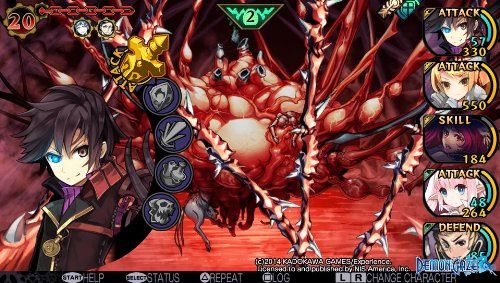
Maybe that's why they can get away with having character designs often clash with the art style of the environment and enemies, and sometimes with the art style of other party members. Several of the character portraits in the above screenshot seem like they were drawn by different people, and there are some moments that, when you look at them in a screenshot gallery, make you think that the characters just don't belong in the world they're inhabiting. And while the game is sometimes visually non-cohesive in a way that becomes really obvious if you pay attention, the truth is that when you're actually playing the game, you're not really paying attention to all that.
For another example of this, I like to turn to Stranger of Sword City, which has a really cool aesthetic that hits you from the moment you pick up the box (or look at the title screen):
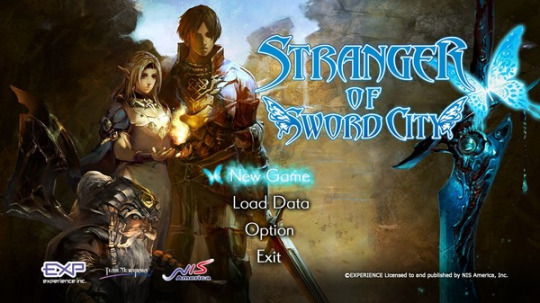
The original release of the game, on Xbox 360, was remarkably consistent with this specific style. But the Playstation Vita version of the game (which was later ported to PC) gives you an updated character creator and your options include, well, a variety of options drawn in a variety of different styles.
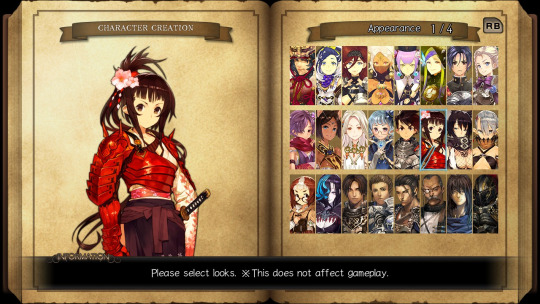
I just looked at the screenshots on the Steam store page for the Stranger of Sword City and, well:
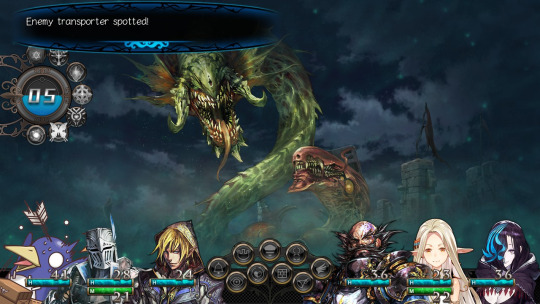
Yes, that is a Prinny in the bottom left corner. Yes, Nippon Ichi did publish this game, why do you ask?
I think one of the reasons I don't tremendously mind the aesthetic choice (or is it a lack of choice?) in a lot of DRPGs like this to randomly have anime-style characters (even when they might be dissonant with the rest of what's on screen) that I don't necessarily need my paladin's look to really communicate that they're a holy warrior or whatever; I really just want them to be eye candy that I can appreciate in the moments when I'm distracted from the numbers. But in the end, it doesn't actually matter that much, because, well...
DRPGs feel like they are all about function over form. (The "looking at the mini-map and not the 3D environment" is a microcosm of a playstyle that's encouraged by a design philosophy that seems to apply to nearly everything in a "good" DRPG.) This puts them in stark contrast to, say, Persona, which involves a ton of dungeon crawling, but relies heavily on the style (which includes the battle music, the stylish combat animations, and the quips that your characters make in battle) to make that part of the game interesting.
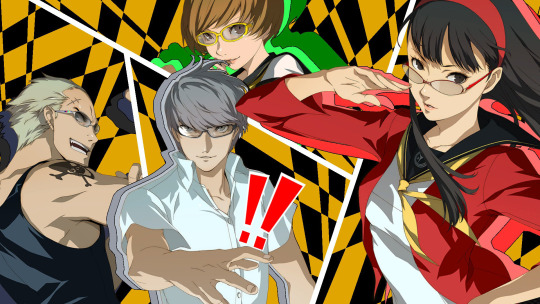
When you down all of the enemies in Persona, part of the "reward" for that comes from getting to deal a bunch of damage to all of the enemies, but a huge part of the reward also comes from the feeling of visceral pleasure that comes in the moment when Akihiko senpai says "I've been waiting for this!" and you smile and agree and say, "Me too, Aki. Now give me that shot that's so iconic it became a meme template."
I probably would not have made it through dozens of hours of crawling through Tartarus in Persona 3 if Mass Destruction weren't such a banger of a battle theme. But I spent just as much (if not more) time dungeon crawling in Demon Gaze despite not having Lotus Juice's rap verses soothing my ears during those battles, which I guess maybe stands as a testament to how good Demon Gaze was at making the game fun?
Ultimately, the abstraction that every RPG leveling system gets toward is "your character gets stronger." Maybe DRPGs are better than any other genre at removing any abstractions that would serve as a barrier between you and that goal. And the best DRPGs also give you formidable challenges that give you ample reason to want to become stronger: games like Etrian Odyssey are notorious for their difficulty. I feel the difficulty is a bit overhyped; much like my feelings on Dark Souls, Etrian Odyssey only really feels "hard" when compared with other games where the player is never put plausibly close to a failure state whereas Dark Souls and EO actually punish the player for making mistakes, and EO also has the "X-factor" of having enough variance (due to things like random crits) that you actually do want to give yourself a decent margin for error. Which is to say, EO is one of the RPGs where you actually care a lot about having a team that's strong enough to kill a boss in 8 turns instead of 10 turns, since that's 20% fewer chances for an unfortunate event to send you back to home base. Powering up your team in EO feels important and significant way more than it does in a lot of other JRPGs.
There is a very real sense in which the entire point of the obligatory spreadsheet companion is to aid you in your quest to become the strongest you can be by breaking the game somehow. The thing I do remember about Demon Gaze (not concretely, but in the abstract) was that there were some item/class combinations that were wildly better than the alternatives. Some might deride this as poor balance, but in my eyes, "breaking" a game in that way is really more akin to "solving" it, in the same way that one might "solve" a puzzle. I did it: I found right combination of skills and items to trivialize the game's difficulty! Huzzah! In a "well-balanced" game where all items and classes were all carefully tuned to be equally viable, such a thing would not be possible. Thus, what others might consider "poor balance" in some DRPGs is actually an essential and core part of what compels me to spend time with those games.
I feel like these factors and more make DRPGs somewhat unique in a way that probably contributes to them reviewing poorly. For example, if you look among discussions on DRPG forums about recommended games, there seems to be universal consensus that Stranger of Sword City is a great game (with many praising it as the best DRPG they've ever played), but on OpenCritic, only 45% of critics recommend it, and I think all of this is perfectly encapsulated by a 6/10 review from TheSixthAxis:
Stranger of Sword City excels at one thing, and really flounders at the others. It's a rewarding experience if you're a fan of challenging RPGs and gameplay depth. If you're a fan of well-written dialogue, engaging music or proper difficulty curves though…well….there are a lot of other video games out there that may suit you better.
And that's the kind of thing that makes me want to locate a guide, crack open a spreadsheet, and start a new save file.
Anyway, the Stranger of Sword City is on sale for 80% on Steam right now. That's $4, for a game that I paid $40 for when it first came out on Vita! I'm tempted to buy it again, just for the convenience of being able to play it on my monitor without having to dig around to locate my old Vita TV.
16 notes · View notes
Thanksgiving Treat for RoW Series!!
Hi y'all! Wanted to do SOMETHING for Thanksgiving as a way of expressing my gratitude to all of my friends, supporters, readers, followers! However, I'm afraid I'm not quite ready to post anything very big at the moment (which was planned I did want to take a break over Thanksgiving), so instead I'm giving you guys a "insider's look" of one of the many notes I keep on hand while writing!
Talia's 40 Rules of Hero Training
(Rules marked with an * are the ones that have already appeared within the series)
Rule #1: Your trainer is always right Rule #2: The three most important elements of becoming a hero: training, training, and training. Rule #3: If it was easy, everybody would be doing it Rule #4: Watch your footwork* Rule #5: Hero's don't make excuses Rule #6: There are no shortcuts Rule #7: Analyze the situation Rule #8: Anticipate Rule #9: Don't get cocky Rule #10: Just being a hero is its own reward Rule #11: No pain, no gain Rule #12: Failure is not an Option Rule #13: No guts, no glory Rule #14: You gotta stay focused Rule #15: Never hit a man when he's down Rule #16: Watch your back Rule #17: Expect the unexpected Rule #18: Use your head Rule #19: Never let them see that they get to you Rule #20: Outfit, Outfight, Outlast Rule #21: A hero is always on duty Rule #22: The Greater your agility the greater your ability Rule #23: Keep your eyes open Rule #24: Control your Strength Rule #25: Pressure makes diamonds* Rule #26: Duck! Rule #27: Stop, look, listen Rule #28: Concentrate* Rule #29: Don't turn your back on your opponent Rule #30: Don't panic Rule #31: Never Give Up Rule #32: Aim!* Rule #33: A hero who won't be beaten, can't be beaten Rule #34: When rescuing a damsel, Always handle with care! Rule #35: Go the distance Rule #36: Act, don't react Rule #37: Learn from your mistakes Rule #38: Put the past behind you and Never Look Back* Rule #39: What doesn't kill you makes you stronger Rule #40: Be so good, they can't ignore you.
8 notes · View notes
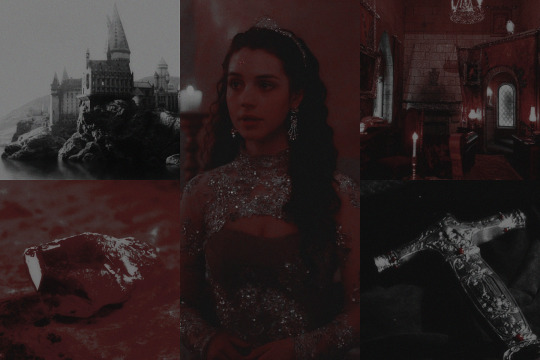
Храбрость, благородство, честь.
1 note · View note
Hyphal Brain

"Monster Brains banner" © Fufu Frauenwahl, accessed at HeavyMetal.com here
[Inspired by the "green brain" from Monstrosities. It's a brain monster and a plant monster, two of that book's favorite tropes in one. The picture in the book wasn't great, though--it basically looks like a levitating cauliflower. That and it has no physical attacks whatsoever. So this version is rather different (again, inspired by). This started development as a stronger, psychic version of the cerebric fungus, as a lot of the monsters in Paizo's Occult Bestiary were stronger, psychic versions of monsters with psychic flavor before the occult rules. And then I remembered that I didn't much care for those monsters. I found trying to maintain the mechanics of the cerebric fungus while adding new abilities was too restrictive, and so ended up in a different place.]
Hyphal Brain CR 6 LE Plant This tower of fungus is supported by ropy tendrils, growing into a brain like shape. Smaller tendrils grow from the creature's midsection, and strange organs emerge from the top of the brain's surface.
Hyphal brains are strange fungus creatures from another planet. This is believed to be the same planet as the cerebric fungus hail from, and there are some similarities between the species. Hyphal brains are unconcerned with food and other animal pleasures, however. They work tirelessly to impose their sense of tyrannical law and forced labor onto mindless creatures, such as oozes and lesser plant monsters, conscripting them into guard duty or endless architectural works. The lair of a hyphal brain is typically within a grand structure following alien aesthetics, and lesser creatures flop and writhe in the hyphal brain's presence as if it were an incarnate god.
Creatures that do not respect the hyphal brain's authority are treated with no mercy, having their minds blasted with psychic magic and their flesh crushed by its tentacles. They have no eyes to see with, and form a mental image using scents, vibrations and more obscure signals picked up with an array of bizarre sensory organs. These organs can also emit an ear-splitting shriek, enough to stun creatures momentarily. A hyphal brain usually reserves one use of this ability in order to use it to escape a combat that has turned against it.
Hyphal brains cooperate well among each other, and areas the size of a country can be overseen by a network of hyphal brains in touch through regular sending spells. They sometimes cooperate with other monsters, particularly those of eldritch aspect, such as mi-go or the Dominion of the Black. They are less interested in treasure than in manpower and obeisance, and those that try to buy their loyalty are scorned.
Hyphal Brain CR 6 XP 2,400 LE Large plant Init +3; Senses blindsight 60 ft., blind, Perception +13 Defense AC 20, touch 8, flat-footed 20 (-1 size, -1 Dex, +8 natural, +4 armor) hp 76 (8d8+40); fast healing 3 Fort +10, Ref +1, Will +8 Immune gaze attacks, plant traits, visual spells and effects; Resist cold 10, fire 10; SR 17 Defensive Abilities inertial armor Offense Speed 30 ft., fly 30 ft. (perfect) Melee 4 slams +9 (1d8+4 plus grab) Space 10 ft.; Reach 10 ft. Psychic Magic CL 8th, concentration +11 22 PE—anticipate thoughts (2 PE, DC 15), blur (2 PE), calm emotions (2 PE, DC 15), crushing despair (4 PE, DC 17) detect thoughts (2 PE, DC 15), mind thrust III (3 PE, DC 16), sending (4 PE), synesthesia (4 PE, DC 17), touch of idiocy (2 PE) Special Attacks command lower life, star scream Statistics Str 18, Dex 9, Con 20, Int 17, Wis 22, Cha 17 Base Atk +6; CMB +10 (+14 grapple); CMD 19 Feats Combat Casting, Flyby Attack, Improved Initiative, Intuitive Spell Skills Bluff +7, Diplomacy +7, Fly +9, Knowledge (dungeoneering) +7, Knowledge (nature) +7, Perception +13, Sense Motive +10, Stealth +2 Languages Aklo, Mi-Go, telepathy 100 ft. Ecology Environment any land or underground Organization solitary, relay (2-6) or command (7-10) Treasure incidental Special Abilities Command Lower Life (Su) Three times per day, a hyphal brain can take command of an ooze or plant creature within 60 feet. Treat this as a charm monster effect (CL 8th, Will DC 17 negates), except that it can control these creatures despite their typical immunity to mind-influencing effects. The save DC is Charisma based. Inertial Armor (Su) A hyphal brain gains a +4 armor bonus to its AC. This is a force effect, and protects it against incorporeal touch attacks. Star Scream (Su) As a standard action three times per day, a hyphal brain can unleash a terrible scream. All creatures in a 30 foot radius take 4d6 points of sonic damage and are stunned for 1 round. A successful DC 17 Fortitude save halves the damage and negates the stunning effect. The save DC is Charisma based.
104 notes · View notes
Sorcery
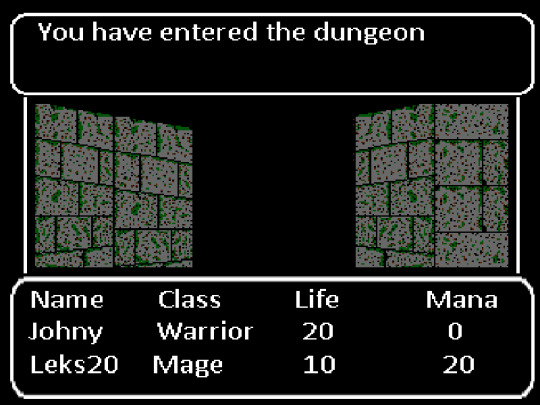
Pixel art about walking the dungeons, role playing game Wizardry III Diamond no Kishi. Version for Super Nintendo. Strange, that I see only Japanese version.
And this is my clone. Pixel art drawing for training. So, it is walking the dungeons. Role playing game. It can be made from this picture. System I made it will be simple, if to make it. In Wizardry itself it is very tricky. You need to watch some tables, if they are ever existed.
And it can be made easier. Walking the labyrinth, searching treasures, new items. And train your characters. Of course, eliminating monsters in a big scale. Some big enemies with lots of life. From other hand, why not to invent some analog to role playing Wizardry style.
Different classes. Warrior, paladin, knight, warlock, sorcerer, archer, ranger, basrd, theif, barbarain, spellcaster. And so on. And even to change class by leveling up a character. Knight can be a dark knight or paladin. So this is more interesting. Such changes in class were in Might And Magic. I played a lot in Might And Magic. In part six.
And even more, that lots of role playing points will be in text form. I remember how I like a doll from Might and Magic 6. So simple model I can make too. And type of weapons. So, sword, long sword, two handed sword, dagger. They can be made its own draw style. Kind of armor – coat, light armor, heavy armor. Hat, helmet.
Here we need to have a typical phrases templates. You have entered the dungeon. Chest is opened. You level up. And so on. Mainly, in a simple way, I see it. As a template, linear move by story. Story screen, city screen. Just like Heroes of Might and Magic 3. In a city there are different locations. Tavern, guild of magic, shops.
Restoration of characteristics is automatic. And than next – only forward into next dungeon. From dungeon you can go back into the city, that is attached to the dungeon. Complete it and move to next city and next dungeon. So you can find new items in the shops, new visual for the new city. And again – into the next dungeon. Dungeons – main part of the game. Labyrinth which you need to walk and learn. Complete tasks from a city. And than move next.
3 notes · View notes
Source: https://www.tumpik.com/tag/swords%20&%20wizardry
0 Response to "Swords Wizardry Continual Light Text File"
Post a Comment